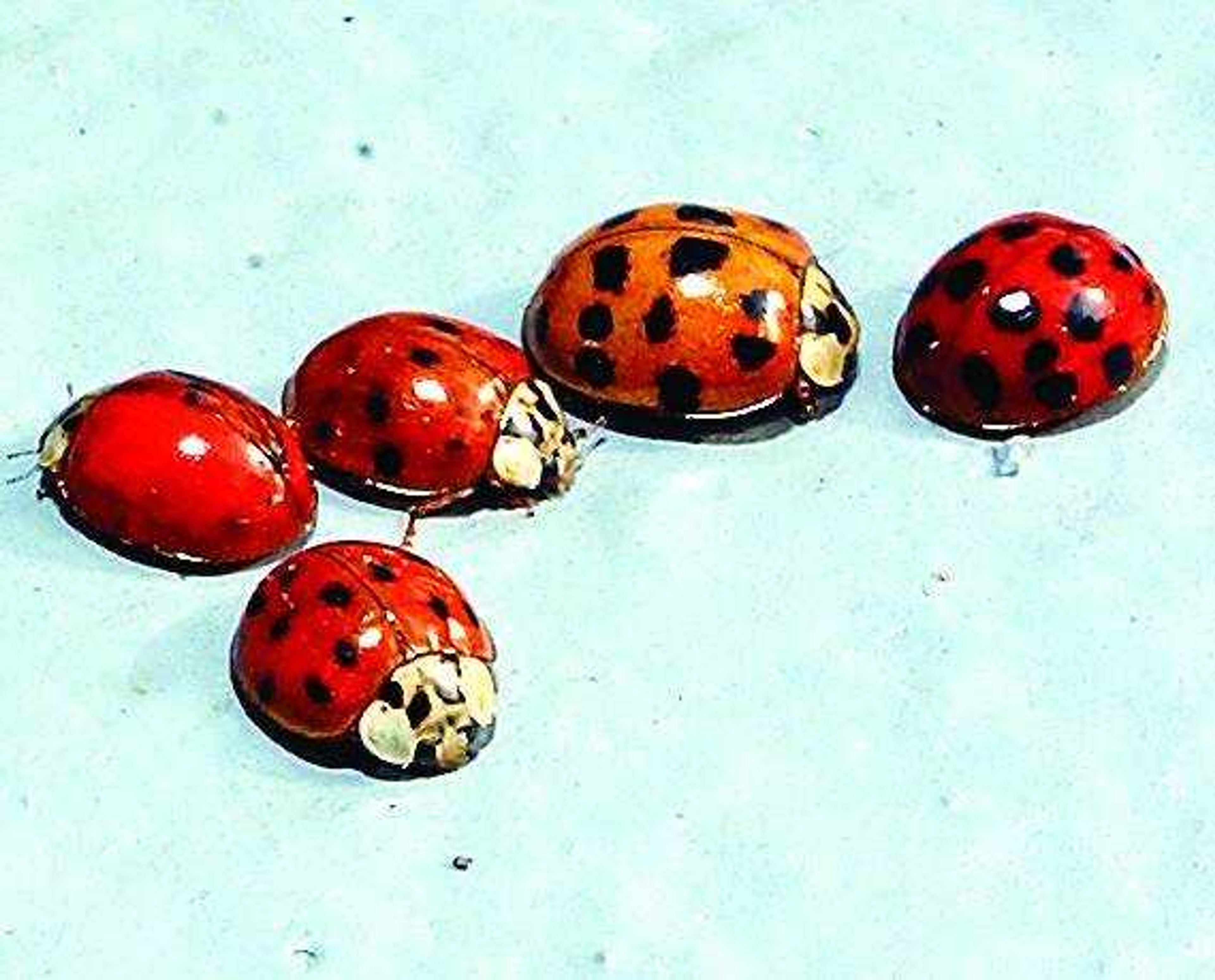There's some very unladylike behavior going on in Southeast Missouri.
Millions and millions of ladybugs swarmed area homes Sunday, first bewildering and then annoying residents. By midafternoon, masses of the pumpkin-colored insects were landing on buildings, cars and skin.
"We've got too many," said Cape Girardeau County resident Schirley Huey. She was doing yardwork on Sunday with her husband when they first noticed the pesky insects flying about. A few even bit them.
"Here in front of our barn, they were swarming all over the place," she said. "I do not recall them ever being this bad."
The Asian ladybird beetle was imported several times over the last century to control aphids, a tiny insect that damages crops. They come in a variety of orange colors and vary in spottage, with some having no spots. The native variety of ladybug is nearly identical in appearance but does not have nearly so voracious an appetite.
Brush an Asian lady beetle off an arm and it may swoop to a cheek, perhaps giving a little nip with its tiny pincers. Squish or agitate it, and the beetle will use a defensive reaction known as "reflex bleeding," releasing a yellow fluid with an unpleasant odor from leg joints.
In their Asian homeland, the beetles cling to rocky cliffs. With no such bluffs here, they head for buildings and crawl under shingles, between boards and inside window and door frames. The beetles are attracted to lighter colors, so light-colored homes usually see more of them.
According to the U.S. Department of Agriculture's Web site, unlike termites and carpenter ants, the beetles do not damage structures and do not lay eggs in homes.
Most experts say the swarms of ladybugs are simply looking for a place to spend the winter. Other theories say their main food supply, aphids, has ballooned due to favorable weather.
What can a person do when a home is being invaded by the little creepers? Wait it out, says Wesley Mueller, agriculture department head at Southeast Missouri State University. Once one enters a home, the beetle will soon starve, he said.
"They'll only be swarming during the warm weather," he said. "Since it cools down soon, I'd say it'll likely be a week before they're gone."
But to quickly eliminate them indoors, residents can use a vacuum hose to suck them off curtains, furniture and from walls and window sills and then set them free outdoors. Keeping them in the vacuum will cause a bad odor.
mwells@semissourian.com
335-6611, extension 160
Connect with the Southeast Missourian Newsroom:
For corrections to this story or other insights for the editor, click here. To submit a letter to the editor, click here. To learn about the Southeast Missourian’s AI Policy, click here.







